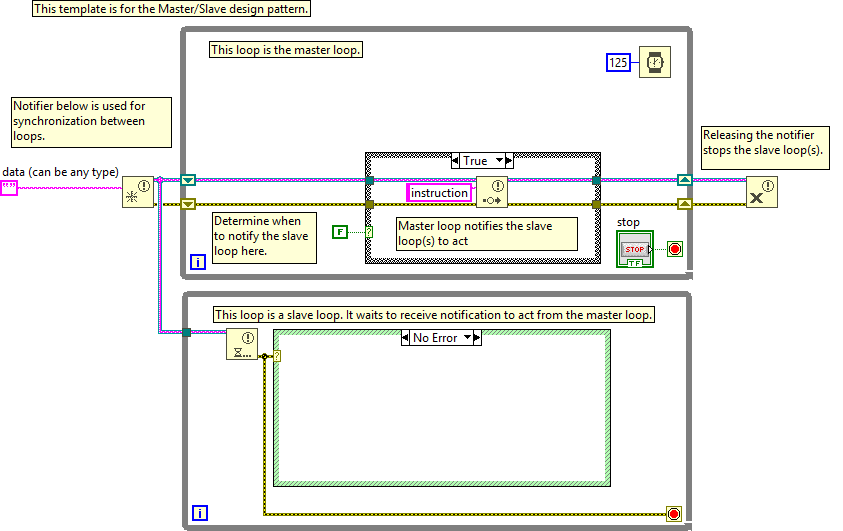Master/Slave
The Master/Slave design pattern is another fundamental architecture LabVIEW developers use. It consists of multiple parallel loops where each of the loops may execute tasks at different rates. Of these parallel loops, one loop acts as the master and the others act as slaves. The master loop controls all of the slave loops, and communicates with them using messaging architectures.


The Master/Slave design pattern is very advantageous when creating multi-task applications. It gives you a more modular approach to application development because of its multi-loop functionality, but most importantly, it gives you more control of your application’s time management. In LabVIEW, each parallel loop is treated as a separate task or thread. A thread is defined as a part of a program that can execute independently of other parts. If you have an application that doesn’t use separate threads, that application is interpreted by the system as one thread. When you split your application up into multiple threads, they each share processing time equally with each other.
This gives you more control on how your application is timed, and gives the user more control over your application. The parallel nature of LabVIEW lends itself towards the implementation of the Master/Slave design pattern.
For data acquisition example above, we could have conceivably put both the voltage measurement and the waveform acquisition together in one loop, and only perform the voltage measurement on every 50th iteration of the loop. However, the voltage measurement and logging the data to disk may take longer to complete than the single acquisition and display of the waveform. If this is the case, then the next iteration of the waveform acquisition will be delayed, since it cannot begin before all of the code in the previous iteration completes. Additionally, this architecture would make it difficult to change the rate at which waveforms were acquired without changing the rate of logging the voltage to disk.
The standard Master/Slave design pattern approach for this application would be to put the acquisition processes into two separate loops (slave loops), both driven by a master loop that polls the user interface (UI) controls to see if the parameters have been changed. To communicate with the slave loops, the master loop writes to local variables. This will ensure that each acquisition process will not affect the other, and that any delays caused by the user interface (for example, bringing up a dialog) will not delay any iteration of the acquisition processes.[1]
Use Cases
Add yours here.
References
- ↑ "Application Design Patterns: Master/Slave" by National Instruments (http://www.ni.com/white-paper/3022/en/)
